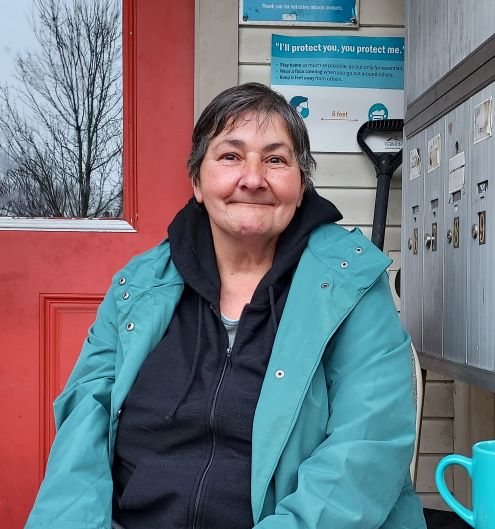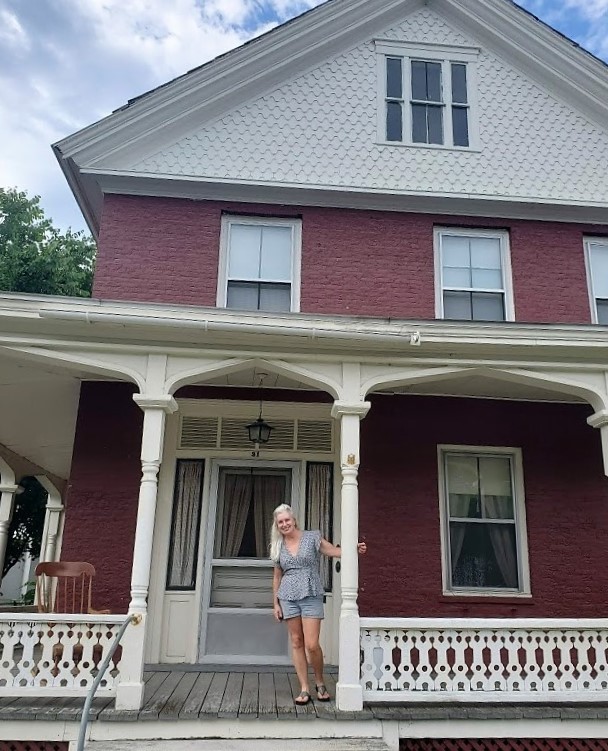Vermont is in the midst of a crushing housing crisis. Across every county and across every community, people are struggling with the cost, access, and stability of housing. The problem has become so acute that it is affecting every aspect of social and economic life in Vermont. Working with families and individuals across the two Southeastern counties in the state, we see the impact firsthand every day. There is nowhere to go.
Grace, a WWHT resident, frames the whole conversation: “The housing crisis is insanity because we live in the wealthiest nation in the world and it’s crazy that we can’t find homes for people – housing is health care. You can’t take care of yourself if you don’t have a place to live – that’s why it’s so critical people have a place to live.”

The shortage of housing is affecting everyone from the first-time homebuyer, to seasonal workers, to families and individuals looking to relocate or take refuge, to college students, to Vermont’s most vulnerable citizens.
“The whole spectrum of housing is stuck,” says Bruce Whitney, Director of Homeownership for WWHT. “There’s no movement. No starter homes are being built, so no renters are moving into homeownership. That, in turn, affects our rental program, because no apartments are opening up. On the market, housing stock is aging and those properties are increasingly becoming unsafe and unhealthy to live in. There are just very few options for anybody.”
Vermont’s housing crisis is neither new nor sudden, although it has gotten significantly worse since Covid hit. Decades of underbuilding, deferred maintenance on aging housing stock, and low wages have finally caught up and created a perfect storm of adverse conditions. WWHT Executive Director Elizabeth Bridgewater offers an overview.
“A lot of people wonder why more housing isn’t being built in Vermont. Some cite Act 250 and its long and complicated permitting process and regulatory red tape. Some of that’s true, but it really comes down to two main factors – the cost of construction, and the level of incomes in the region. It’s expensive to build, and rents need to be extremely high to cover those costs. so modest homes simply don’t get built It’s an economic equation, and it just doesn’t add up.”
Funding for housing is funneled to areas that encourage smart growth – compact settlement patterns that encourage downtown vitality and conserve the surrounding natural resources and rural economies. These are called Designated Downtowns, Village Centers, or Neighborhood Development Areas. To make projects financially feasible, these areas also must have sewer and water infrastructure in place. And given the rural nature of both Windham and Windsor Counties and the limited public infrastructure already in place, that greatly limits the location of where the Housing Trust can build.
“A lack of public infrastructure adds a level of cost we can’t take on as a small housing organization,” explains Elizabeth. “We’re at a unique point in time, however, with town’s receiving ARPA funding. Many region towns have been coordinating with the Regional Planning Commissions on how to leverage these funds and support their centers – many have been finding that this is the time to invest in public infrastructure like water and sewer. There’s a real logic behind directing projects to these areas, like supporting thriving village centers and compact development.”
According to Elizabeth’s leadership team, there are multiple factors at play. Front and center is Vermont’s red hot real estate market. Since the beginning of the pandemic, people from out of state have been buying up properties sight unseen, in some cases for cash, and often for far above asking price. That has driven the median price of a home in Vermont to nearly $400,000. Many renters are being pushed out because their landlords are selling the homes they are living in, eager to cash in on the seller’s market. And many of those sales become investment properties, converting to short-term rentals, and depleting the supply of rental housing even further.
Another factor is Vermont’s aging housing stock. The cost of doing home repair and renovation is expensive, putting that work out of reach for many low, moderate, and fixed income Vermonters. Many of those older homes are now not up to health and safety codes. We’ve seen this in our Rental Rehab program with older Victorians all built in the same era with slate rooves now all needing attention. Rebecca Gagnon, property owner in Bellows Falls, shared her experience. “All these buildings need plumbing and electric work. I could never have done that without the assistance of the grant program. Now these properties that were vacant are housing local families.”

“All these buildings need plumbing and electric work. I could never have done that without the assistance of the grant program. Now these properties that were vacant are housing local families.”
“All up and down our service area, we are living in a desert of quality affordable housing,” says Bob Crego, Director of Asset and Property Management for WWHT. He says there are between 500 and 600 people on the wait list for one of their apartments. “Typically, it takes about a year to move off the waitlist. Right now, as we’re working on rehabbing some of our earliest developments with deep energy efficiency and maintenance upgrades, we need to relocate the current residents to other apartments during construction – we can’t find a single unit. We’ve called landlords that have dozens of units around town, they tell us they don’t have a single vacancy.”
Residents Jim and Watson feel fortunate to be living at Windsor Village following a difficult and stressful search. Due to Jim’s blindness, he cannot live alone. Watson, his friend of 45 years, is his main support as well as his attorney.
During the pandemic, Jim and Watson spent 17 months living in Vermont hotels, and a solid year trying unsuccessfully to use a Housing Choice Voucher. “Our experience in the local housing market was horrible,” says Watson. “I witnessed a lot of price gouging on the part of numerous private landlords. Discrimination, I feel, is the biggest problem in Vermont. With Jim, it was discrimination against the disabled.”
This dire shortage of housing is also affecting Vermont’s refugee resettlement efforts, and more broadly, the State’s cultural development. “Housing is the main reason that population has lacked diversity,” says Bob. “We have an influx of Afghan refugees right now, and these families are living in dorms. They have rent money, but nowhere to go. If we want to be a diverse community, we need to do a better job of making people feel welcome; we need to embrace opportunities to address this crisis at every level.”
Those working on solutions say Vermonters needs to become active housing advocates. There are a lot of ideas being circulated, and engaged interest from a wide range of citizens — from politicians to builders, to business leaders in the private sector.
Governor Phil Scott wants to address the “missing middle,” a reference to a lack of homes within reach for moderate-income Vermonters. He has proposed a 15 million dollar plan to make it happen. The State is working on Act 250 reform and calling on housing advocates to inform the guidance, as well as relaxed zoning laws that would allow for higher residential density within downtown areas. State level advocacy efforts are also calling for raising taxes for corporate homebuyers.
“There are other solutions besides building new,” offers Peter Paggi. “By changing the zoning laws, we can begin to look at the development of more Accessory Dwelling Units (ADUs), where owners take those rambling old barns, farmhouses and carriage houses and bring them onto the market as additional housing units.”
In the swirl of all of the overwhelming challenges, there is an occasional glimpse of hope. Bruce Whitney shared the story of a family that just closed on their first home. The buyer – a single mom – has three children and her mother living in the household. “They were paying $1500 a month in rent, on a moderate income. Her mortgage is now $688. That’s nearly a thousand more dollars a month they will have for things like groceries, education, and home repair. It’s going to make a huge difference for that family.”
Everyone agrees – there’s no single solution to this crisis. “We’re approaching it from all angles,” says Elizabeth Bridgewater. “Here at the Housing Trust, we all recognize that when we address housing we address so many other things – it’s central to building a healthy, stable, connected community. To succeed, we need energy, support and momentum at every point in the community.”
What can ordinary citizens do to address the housing crisis? Marion Major, Outreach and Marketing Coordinator, offers actionable steps anyone can take. “It’s critical to get involved in the conversation on the ground level. That can mean joining the local planning commission or regional commission, joining or starting an affordable housing committee in your town, engaging in positive conversation with neighbors and confronting misinformation or biases, getting excited about zoning, becoming an advocate for affordable housing at local board meetings. Identify how safe and decent housing is a solution that addresses so many of the barriers Vermonters face and bring that to the conversation.”
“Over the next four years we are looking at building or renovating 129 units of rental housing,” says Peter Paggi. “That will require the support of the community at every level. Engaging in the process is key to a successful outcome.”
As for Grace, the resident who encapsulated this whole discussion, she’s engaging right here in the community- working to bring folks down to DC for a march on Washington for Housing and Healthcare.

